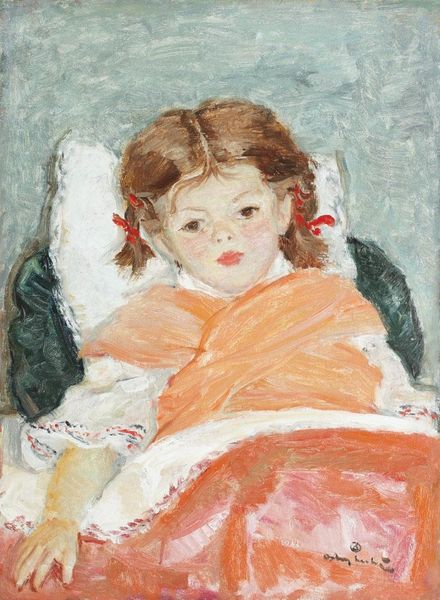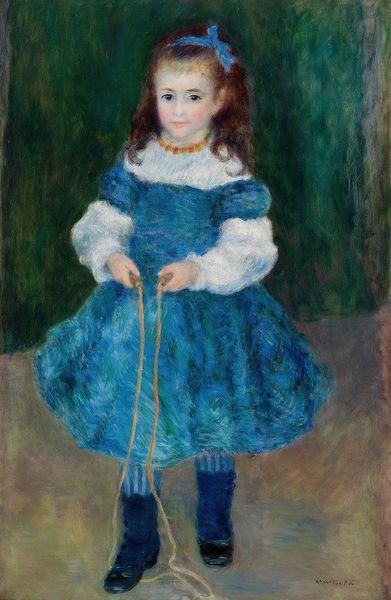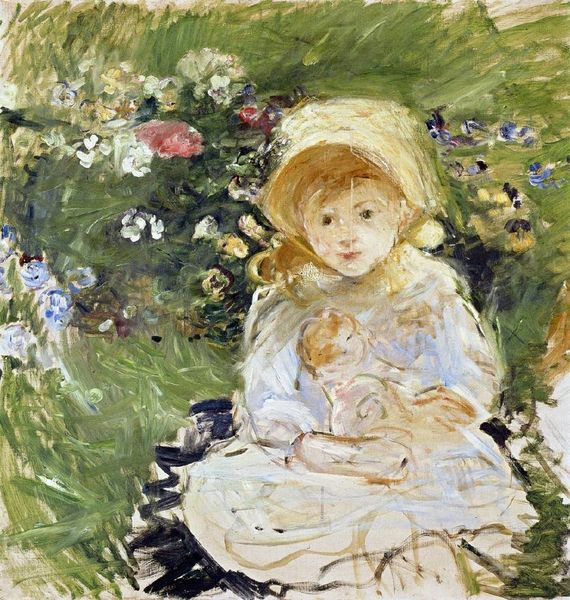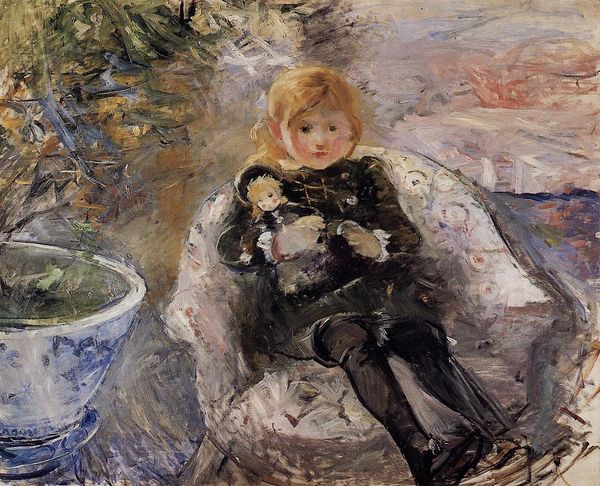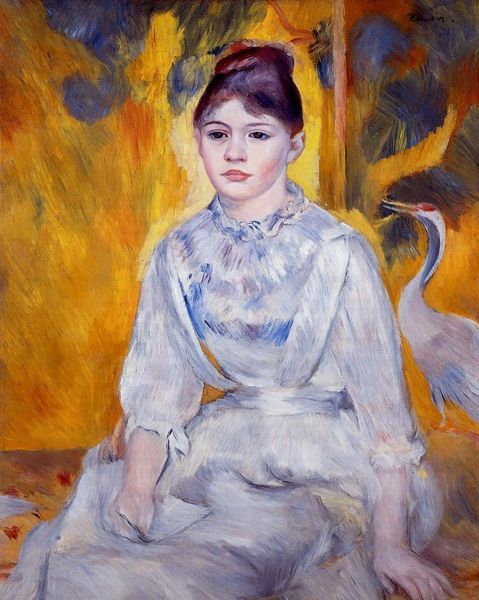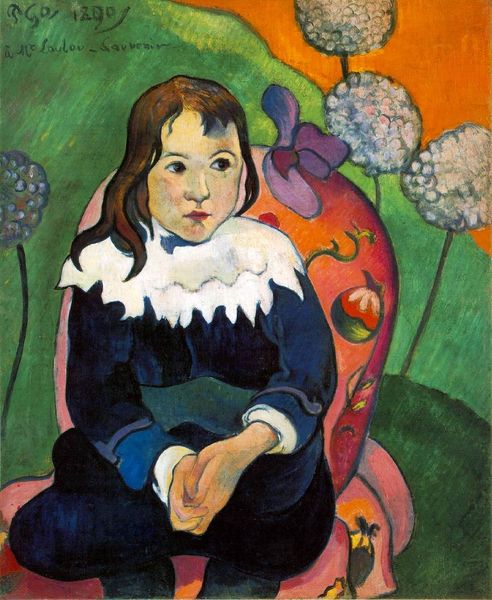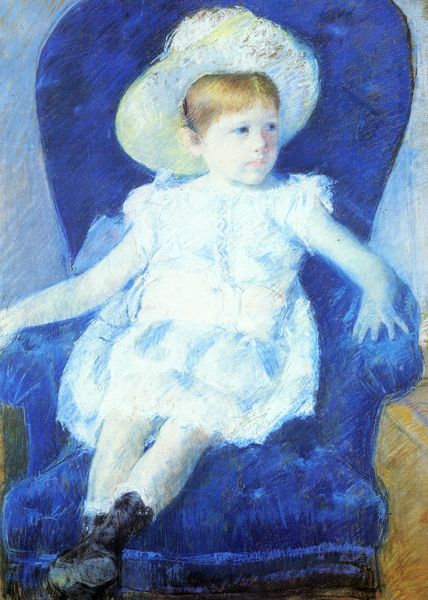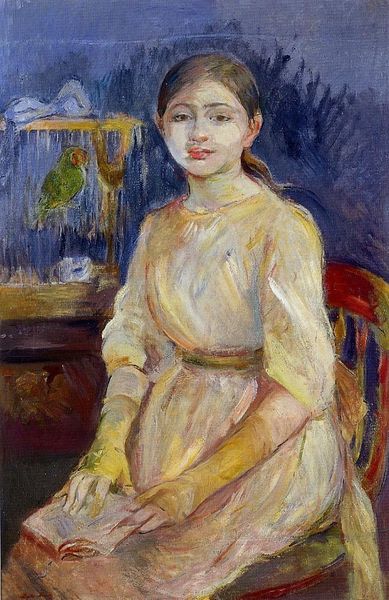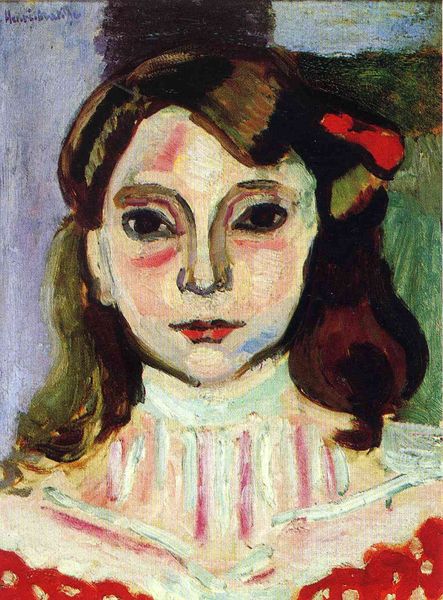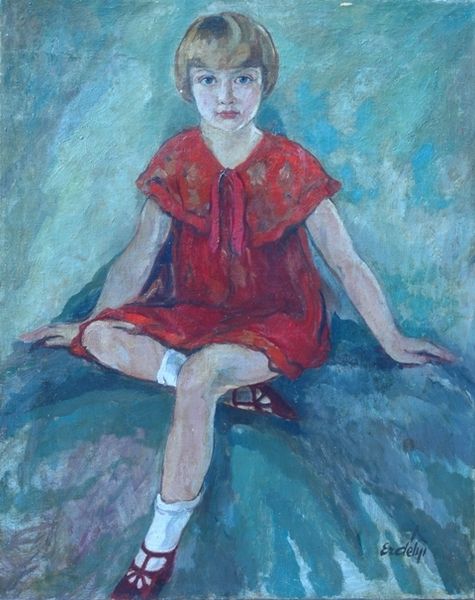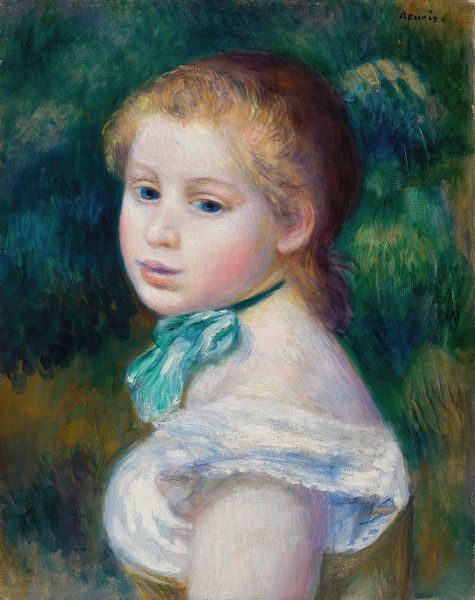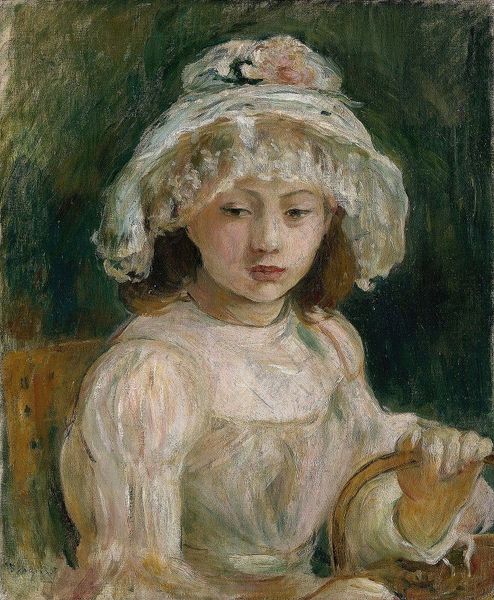
Copyright: Public Domain: Artvee
Curator: George Bellows’s "Portrait of Anne," created in 1915, strikes me immediately as both intimate and somewhat melancholic. It’s a lovely oil painting. The somber palette is quite dominant; did that color scheme jump out at you as well? Editor: Indeed. The restrained palette emphasizes a sense of interiority. The girl is contained by shades of blue and near-blacks, common features in Bellow’s approach. Knowing Bellows’ association with the Ashcan School, is he pushing against established expectations for portraiture of young girls from that era? Curator: Absolutely. He subverts those conventions of innocence by injecting a level of quiet intensity. Anne's pale dress can't mask that, and is this a marker of changing perceptions of childhood? The dark background is far more active than a generic "portrait studio" style backdrop might have been. We also see his mark-making which makes this image much more than a "sweet portrait," it's almost confrontational, psychologically, due to how we perceive a portrait's social function and expectation of capturing a moment. It is less capturing, and more constructed for effect. Editor: And notice how that effect relates to its setting: not some elite parlor, but an implied domestic interior? In its historical moment, this composition signals a particular social awareness – not just capturing the sitter's likeness, but subtly questioning who has access to such art, to begin with. We can interpret it within that framework of democratization, with this kind of aesthetic challenging social elitism. Curator: Good point. This ties into broader modernist strategies to critique social conventions through formal means and subject matter. And also note the white of the dress. How is Bellows trying to show this symbolic ideal or cultural meaning in a more honest way than prior works? I can imagine him trying to balance these values: domestic life in an emerging metropolis. The painting can mean multiple things based on where it lands on this spectrum. Editor: That tension is precisely where this piece gains strength; holding these multiple viewpoints simultaneously gives the artwork enduring cultural value. Thanks for offering fresh insights, I find it helpful in considering how this work lives within both historical and contemporary dialogues about representation and visibility. Curator: The painting encourages us to rethink how societal expectations are perceived and reshaped by those living in the margins of that image. Thank you for sharing that moment of reflection with me as well.
Comments
No comments
Be the first to comment and join the conversation on the ultimate creative platform.
